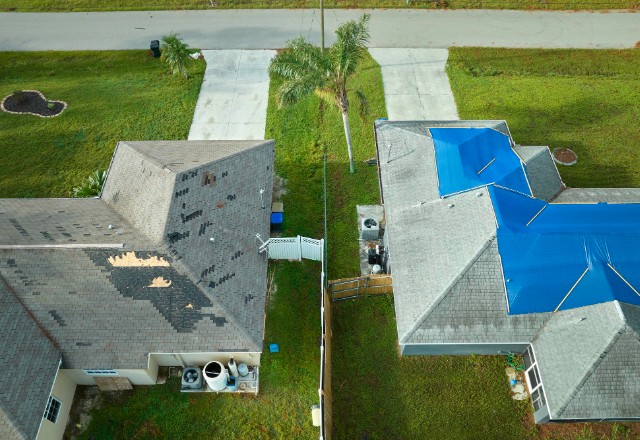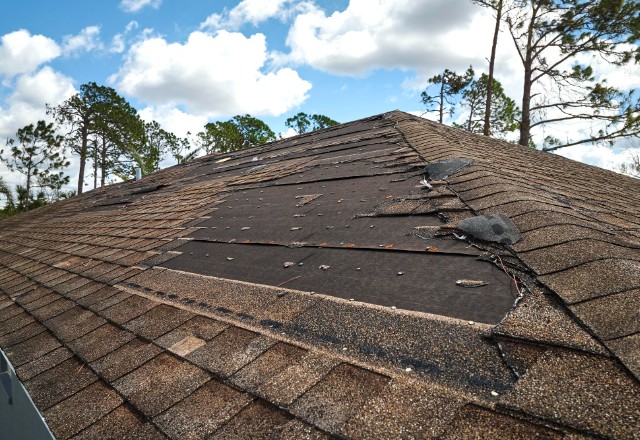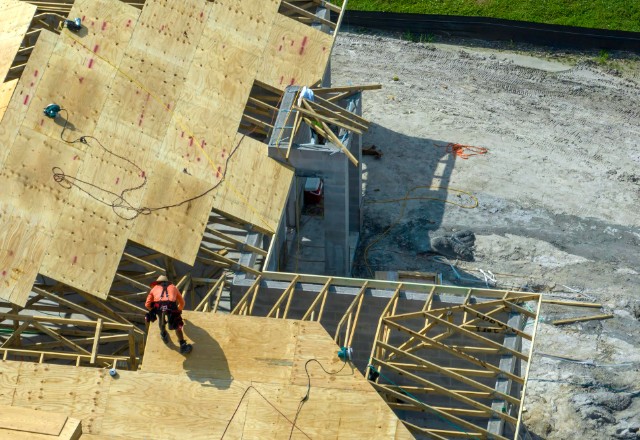Getting insurance to cover a roof replacement is a process that many homeowners face
at some point. It is important to understand the steps involved in navigating the insurance
claim process to ensure a smooth and successful outcome.
The goal of this comprehensive guide is to provide homeowners with a step-by-step
approach to getting insurance to pay for roof replacement. We will walk you through the
necessary steps, from assessing the damage and filing a claim to working with insurance
adjusters and selecting a reputable roofing company.
By understanding the insurance policy coverages, documentation requirements, and the
typical process, you can increase your chances of a successful roof replacement claim.
Don’t let the stress of dealing with insurance companies and understanding the
complexities of their policies hold you back from getting the roof replacement you need.
With this guide, you will gain the knowledge and confidence to navigate through the
insurance claims process, ensuring that your roof replacement is covered by your
insurance provider. Let’s explore the steps together and ensure that you receive the
compensation you deserve.
Disclaimer: The information provided in this article is intended for informational purposes
only and should not be construed as legal or professional advice. We strongly urge you to
contact a qualified roofing contractor, such as Advance Roofing LLC, for further
assistance with the claims process and for accurate estimates of repair or replacement costs. Additionally, your insurance policy and current premium rates should also be
considered before filing any claims.
Understanding Roof Replacement Coverage
When it comes to insurance coverage for roof replacement, it’s important to have a clear
understanding of your policy and what it covers. Typically, homeowners insurance
policies provide coverage for roof damage caused by certain perils such as storms, hail,
wind, and other covered events. However, it’s important to remember that each policy is
unique, and coverage will vary.
Common scenarios where insurance may cover the cost of a new roof include damage
from severe weather conditions such as hailstorms or windstorms. If your roof sustains
significant damage due to a covered event, you may be eligible to file a claim for roof
replacement.
To ensure a successful claim, it’s essential to document and provide evidence of the
damage. This may include photographs, videos, and written documentation from a
reputable roofing contractor. Additionally, it’s important to notify your insurance provider
promptly and follow their guidelines for filing a claim.
Insurance adjusters will assess the damage to determine coverage. They may inspect the
roof themselves or may request an inspection by a professional roofer. It is crucial to
cooperate with the adjuster and provide any necessary information they request.
If your claim is approved, the insurance company will typically cover the cost of the roof
replacement, minus any applicable deductibles or coverage limits. It is essential to review
your policy to understand these details.
To ensure a smooth process, it is recommended to work with a reputable roofing
company experienced in handling insurance claims. They can assist you in navigating the
process, providing necessary documentation, and ensuring the repairs meet the
requirements set forth by your insurance provider.
By understanding the basics of roof replacement coverage and following the necessary
steps, you can increase your chances of getting insurance to pay for a roof replacement.
It’s essential to review your policy, document the damage thoroughly, and work closely
with your insurance provider and roofing contractor to ensure a successful outcome.

Qualifying for Roof Replacement Coverage
Qualifying for roof replacement coverage from insurance depends on several factors.
- One important consideration is the age of the roof. Most insurance
policies only cover roof replacements if the roof is damaged before a
certain age, typically between 10-20 years. This is because roofs are
expected to have a certain lifespan, and normal wear and tear is not
usually covered by insurance. - Additionally, pre-existing damage may affect the eligibility for coverage.
Insurance companies may not cover roof replacements if there is
evidence of neglect or lack of maintenance. It’s important to regularly
inspect and maintain your roof to ensure it remains in good condition. - Another factor that determines coverage is the cause of the damage.
Insurance policies typically cover damage caused by certain perils like
storms, hail, wind, and other covered events. However, they may not
cover damage caused by poor installation, pests, or normal wear and
tear.
To determine if your roof replacement qualifies for insurance coverage, it’s crucial to
review your policy thoroughly and consult with your insurance provider. They can provide
specific information on coverage limits, deductibles, and the claims process. It’s also
advisable to work with a reputable roofing contractor who can assess the damage,
provide necessary documentation, and ensure the repairs meet the requirements set
forth by your insurance provider.

Getting a New Roof Through Insurance: How it goes
Getting a new roof through insurance can be a complex process, but by following these
steps, you can increase your chances of getting your claim approved:
- Initial Assessment: Start by assessing the damage to your roof. Look for signs of leaks,
missing shingles, or structural issues. Take photos or videos to document the damage for
your insurance claim. - Review Your Insurance Policy: Familiarize yourself with your homeowners insurance
policy to understand what is covered and any deductibles that may apply. Some policies
may have limitations on coverage for certain types of damage, so it’s important to know
the specifics. - Contact Your Insurance Company: Once you have assessed the damage and reviewed
your policy, contact your insurance company to file a claim. Provide them with all relevant
documentation, including the photos or videos of the damage. - Insurance Adjuster Inspection: An insurance adjuster will be assigned to assess the
damage firsthand. Schedule a time for the adjuster to visit your property and conduct a
thorough inspection. Be present during the inspection to answer any questions and point
out the extent of the damage. - Obtain Estimates: Get quotes from reputable roofing companies for the cost of the roof
replacement. These estimates will help determine the amount of coverage you may be
eligible for. Share these estimates with the insurance adjuster. - Negotiate with the Adjuster: If the adjuster’s initial offer does not cover the full cost of
the roof replacement, don’t be afraid to negotiate. Present your documentation and
estimates to support your case and ensure you receive fair compensation. - Approval and Roof Replacement: Once your claim is approved and the coverage
amount agreed upon, you can proceed with hiring a professional roofing company to
replace your roof. Coordinate with your insurance company on any necessary paperwork
or procedures.
Remember to document all communication, estimates, and repairs throughout the
process. Being prepared, organized, and diligent can significantly increase your chances
of getting a new roof through insurance.

Documentation and Evidence
Documentation and evidence are crucial when it comes to filing an insurance claim for
roof replacement. Having thorough documentation can significantly increase your
chances of getting your claim approved and receiving fair compensation from your
insurance company.
To effectively document the damage to your roof, start by taking clear and detailed
photographs of the affected areas from different angles. These photos should highlight
any missing shingles, leaks, or structural issues. Additionally, consider taking videos that
capture the extent of the damage. Make sure to include close-ups and wide shots to
provide a comprehensive view.
In addition to visual evidence, provide a written description of the damage. Be specific
and detailed, noting the date and time when the damage occurred, as well as any
contributing factors like hailstorm or strong winds. Include information about any
temporary repairs you may have made to prevent further damage.
It’s important to gather evidence before making any repairs or addressing the damage.
This will help support your claim and prevent the insurance company from questioning
the cause or severity of the damage.
By collecting and organizing all relevant documentation, such as photographs, videos,
and written descriptions, you can present a compelling case to your insurance company.
Remember to keep copies of all documentation for your records, as well as for any future
discussions or negotiations.

Working with Insurance Adjusters
Working with insurance adjusters can be a crucial aspect of the roof replacement claim
process. Here are some tips to effectively communicate with them:
- Be prepared: Before contacting an insurance adjuster, gather all the necessary
information about your roof damage, including photographs, videos, and a written
description. Make sure you have a copy of your insurance policy readily available. - Provide accurate information: When speaking with the adjuster, be honest and provide
accurate details about the damage. Stick to the facts and avoid exaggeration or
speculation. - Be organized: Keep all your documents, including estimates from roofing contractors
and bills for temporary repairs, in a well-organized file. This will help you present a strong
case and support your claim. - Ask questions: Don’t hesitate to ask the adjuster about their assessment process, what
is covered under your policy, and any other relevant details. Understanding the process
can help ensure you receive the compensation you deserve. - Stay engaged: Follow up regularly with the adjuster to keep the lines of communication
open. Be proactive in providing any additional information or documentation they may
request.
Remember, the adjuster’s role is to evaluate the damage and determine the coverage
provided by your insurance policy. By effectively communicating with them and providing
accurate information, you can increase the chances of a favorable outcome for your roof
replacement claim.

Understanding Insurance Checks for Roof Replacement
When it comes to roof replacement, insurance payouts can make a significant difference
in covering the costs. Here is a simple guide to help you understand how insurance
checks for roof replacement typically work and the process for receiving and endorsing
them.
Insurance payouts for roof replacements are usually based on the actual cash value
(ACV) or the replacement cost value (RCV). ACV and RCV are two types of coverage for
roof damage in homeowners insurance policies. ACV considers depreciation, while RCV
covers the full cost of replacement. Roof damage caused by covered perils, such as
hailstorms, wind damage, or fire, is typically covered.
After the insurance adjuster evaluates the damage, they will calculate the coverage
amount according to your policy. Once you file a claim, you will receive an upfront check
for the actual cash value (ACV). The remaining RCV amount will be paid once the roof
replacement is complete, upon receipt of documentation such as invoices and proof of
completion.
To receive and endorse insurance checks, you need to follow a simple process. First,
ensure the checks are payable to both yourself and your mortgage company if applicable.
Contact your mortgage company to understand their endorsement process.
After receiving the checks, proceed with depositing them into your bank account. If your
mortgage company requires endorsements, send the checks over for endorsement
before depositing them into your bank account.
Understanding the ins and outs of insurance checks for roof replacement is crucial to
ensure a smooth process and timely payment. By following these steps and staying
organized, you can ensure your roof replacement costs are covered by insurance.
Maximizing Your Claim Approval
When it comes to getting your insurance to pay for a roof replacement, there are
strategies you can employ to increase the likelihood of claim approval. Here are a few tips
to guide you through the process:
- Document the Damage: Before contacting your insurance company, thoroughly
document the roof damage with photographs and videos. This will provide solid evidence
to support your claim. - Prompt Reporting: It is important to promptly notify your insurance company after the
damage occurs, as many policies have time limitations for reporting claims. Taking
immediate action is crucial to ensure that your claim is considered. - Reputable Roofing Contractor: Hiring a reputable roofing contractor is essential. They
can provide a detailed estimate of the roof replacement cost that includes all necessary
repairs. This estimate from a professional will carry more weight than a rough estimate or
DIY assessment. - Be Present During Inspection: When the insurance adjuster comes to assess the
damage, be present to provide information and answer any questions they may have. This
way, you can ensure that all damage is accurately documented and considered in your
claim. - Understand Your Policy: Familiarize yourself with the details of your insurance policy.
Know the coverage limits, deductibles, and any exclusions that may apply to your roof
replacement. - Proper Maintenance: Regular maintenance and care of your roof can make a significant
difference in claim approval. Many insurance companies may deny claims if the damage
is due to lack of maintenance or neglect. Ensure routine inspections and necessary
repairs are conducted to keep your roof in good condition. - Appeal if Necessary: If your claim is denied or you receive a payout that doesn’t cover
the full cost of the roof replacement, don’t be afraid to appeal. Gather additional evidence,
such as expert opinions or independent inspections, to strengthen your case.
Remember, every insurance company and policy is different. These strategies can help
maximize your chances of getting insurance to pay for your roof replacement, but it’s
important to thoroughly review your policy and work closely with your insurance agent
throughout the process.

Common Challenges and How to Overcome Them
When filing an insurance claim for a roof replacement, homeowners may encounter
several challenges. However, with the right approach and knowledge, it is possible to
overcome these hurdles and ensure a successful claim. Here are some common
challenges and solutions for addressing them:
- Disputed Claims: Insurance companies may dispute the cause or extent of the roof
damage, leading to claim denials or lower payouts. To overcome this challenge, gather
strong evidence such as photos, videos, and professional assessments to support your
claim. Consider obtaining a second opinion from a reputable roofing contractor or an
independent roof inspector. - Claim Delays: Insurance companies may take longer than expected to process the
claim or request additional documentation. To address this, maintain regular
communication with your insurance agent or claims adjuster, and follow up on any
requested information promptly. Keep records of all conversations and documents
exchanged to ensure transparency and expedite the process. - Inadequate Payouts: Homeowners might receive payouts that do not cover the full cost
of the roof replacement. In such cases, it is essential to thoroughly review the claim
settlement and seek clarification from the insurance company. If necessary, consult with
a public adjuster or an attorney who specializes in insurance claims to negotiate a fair
settlement. - Exclusions and Policy Limitations: Some insurance policies may have exclusions or
limitations for certain types of roof damage. Review your policy carefully to understand
these provisions. Consider upgrading your coverage options or obtaining additional
endorsements to ensure comprehensive protection for your roof.
By being proactive, well-prepared, and persistent during the insurance claim process,
homeowners can overcome common challenges and increase the chances of a
successful roof replacement claim. Remember to always document everything, seek
professional assistance when needed, and advocate for your rights as a policyholder.

Navigating the Roof Replacement Process
Once your insurance claim for roof replacement is approved, it’s time to move forward
and ensure a smooth and successful process. Here are the steps to take:
- Select a Qualified Roofing Contractor: Choosing a reputable roofing contractor is
crucial to ensure quality workmanship and adherence to building codes. Look for
contractors with experience in insurance claims and roof replacements. Ask for
recommendations from friends, family, or your insurance agent. Additionally, verify that
the contractor is licensed, insured, and bonded. - Schedule the Replacement: Coordinate with your selected roofing contractor to talk
about the best time for the replacement. Take into account variables such as weather
conditions and the contractor’s availability. Keep in mind that demand for roofing services
may be higher during peak seasons, so plan accordingly. Oversee the Project: During the roof replacement, it’s important to stay involved and
monitor the progress. Communicate regularly with the roofing contractor to ensure the project is on track. Address any concerns or questions promptly. Remember to document
the process with photos, videos, and written notes in case any issues arise later.- Final Inspection: Once the replacement is complete, conduct a final inspection with the
roofing contractor. Check for any potential issues or deficiencies, and ensure that the
work meets your satisfaction. If any problems are identified, discuss them with the
contractor and resolve them promptly.
By following these steps and staying proactive throughout the process, you can navigate
the roof replacement with ease and ensure that your new roof is installed correctly, giving
you the peace of mind you deserve.

Should You Use Insurance to Replace Your Roof?
There are a few factors to consider when deciding whether to use insurance to replace
your roof.
- First, assess the extent of the damage. If your roof has been severely
damaged due to a covered peril, such as a hailstorm or wind damage, it
may be a good idea to file an insurance claim for roof replacement.
However, if the damage is minor and can be repaired at a lower cost, it
might be more cost-effective to handle the repairs without involving your
insurance company. - Another important factor to consider is your insurance deductible. This
is the amount you’ll need to pay out of pocket before your insurance
coverage kicks in. If your deductible is high, it might not make financial
sense to file a claim for a relatively minor roof replacement. - Lastly, consider the impact on your insurance premiums. Insurance
companies take into account the number and severity of claims you file
when determining your premiums. If you file a claim for a roof
replacement, especially if it’s due to normal wear or lack of maintenance,
it could lead to higher premiums in the future.
In summary, it’s advisable to use insurance for a roof replacement if the damage is
significant and caused by a covered peril. However, consider your deductible costs and
the potential impact on your insurance premiums before making a decision.

Conclusion
In conclusion, getting insurance to pay for a roof replacement can be a complex process,
but understanding the insurance claim process is crucial for a successful outcome. Start
by reviewing your insurance policy and understanding what is covered and what is not.
Assess the extent of the roof damage and determine if it meets the criteria for an
insurance claim, such as being caused by a covered peril like severe weather.
To handle your claim effectively, begin by documenting the damage and collecting any
necessary evidence. Contact your insurance provider to initiate the claims process and be
prepared to provide all required information. It is also advisable to consult a reputable
roofing contractor who can offer assistance with the claim, given their expertise in the insurance procedures and ability to provide accurate estimates for repairs or replacement
expenses.
Keep in mind that your insurance deductible and the impact on your premiums should
also be considered before filing a claim. If the cost of the roof replacement is relatively
minor, it may not be financially beneficial to file a claim. Moreover, filing a claim for
normal wear or lack of maintenance could lead to higher premiums in the future.
At Advance Roofing LLC, we specialize in all types of roof repairs and replacements. We
have extensive experience working with insurance companies and can guide you through
the claims process. Contact us today for a professional assessment of your roof and let
us help you get the coverage you deserve.



 509-201-4190
509-201-4190
